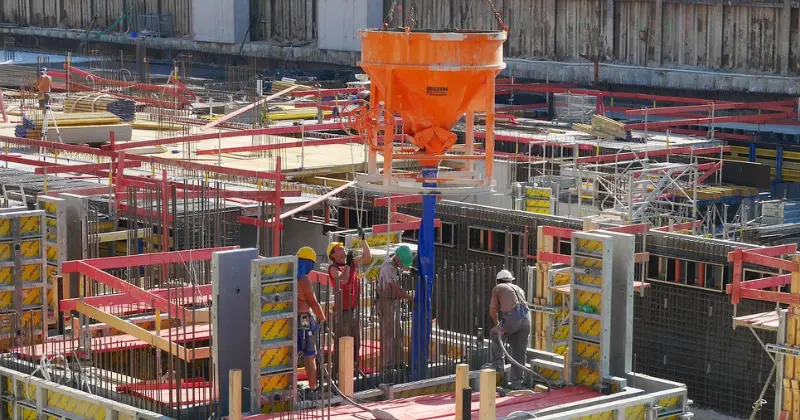10 mins read
Understanding Construction Soft Costs and How They Differ from Hard Costs

There are many different types of costs that impact construction projects, but soft costs are especially important to forecast and track, since they cover the necessary yet intangible expenses that contribute to the success of design, construction, and administrative tasks. Understanding construction soft costs, and the differences between hard and soft costs, is essential for project teams creating realistic budgets and projections.
In this blog post, we define soft costs in construction by reviewing the common types and categories, and presenting some real-world examples. We also provide a useful list of tips to help project teams monitor and control soft costs.
What are Construction Soft Costs?
Construction soft costs are the expenses that are not directly linked to the physical building or construction processes, including insurance, design, permitting, and legal fees. These soft costs can span multiple projects, making them more difficult to manage and assess.
Soft costs are not included in the quantity takeoff and estimation processes used to assess overall project costs based on design drawings and specifications, which can make accurate projections challenging. Reviewing past projects, brainstorming hidden costs and fees, and utilizing advanced software tools are some of the best ways to ensure soft costs remain visible and current.
Why is it Important to Account for Soft Costs in Construction?
Hard costs fill the agendas of builders, planners, and contractors as they obtain the essential resources needed to complete a project. With so much emphasis placed on reducing and managing these tangible costs, it can be easy to overlook the links between soft costs, design quality, security, and safety.
The construction soft costs percentage is typically 20-30% of the total project budget. While this is significantly less than the money spent on hard costs, even a small miscalculation or oversight can lead to overruns and unexpected expenses that create financial strain late in the project schedule. These unwanted consequences can lead to disputes between contractors, clients, and other stakeholders.
Examples of Typical Construction Soft Costs

Reviewing some of the common soft cost types makes it easier to understand the scope, relevance, and unpredictability of project expenses in this category.
Design and development
Architectural services, structural engineering, and other design expenses are among the first and most essential construction soft costs on every project. Quality, originality, and client satisfaction are top considerations during the design phase, but it is also important to control design costs using software and technology like building information modeling (BIM) to make collaborative feasibility, structural integrity, and safety analysis cost-effective.
Insurance costs
The cost of insurance premiums for essential liability and builders’ risk policies, along with payment and performance bonds, are known as “delay in opening” soft costs, since the project cannot proceed until the appropriate policies are in place. Project type, staff size, and previous claims add additional variability, so these expenses should be captured on the construction soft cost checklist as early as possible.
Permits and licenses
General building permits, along with specialty permits for plumbing, electrical, and other specialty work, are also considered soft costs in construction. The licensing costs can also escalate beyond what was anticipated, with each city, country, and region having their own regulatory requirements that must be addressed.
Project management
While some project management expenses are rolled into the general contractor’s margin, owner’s representative fees, construction management services, administrative costs, and other expenses associated with project management can consume a large percentage of the soft cost budget. Construction management software helps to reduce these expenses by making it easier to track and organize activities, resources, and expenses.
Sustainability
Obtaining coveted LEED, BREEAM, and other green building certifications to meet the expectations of clients and occupants is a worthwhile project objective, but these certifications also come with associated soft costs, including specialized design services, fees for environmental studies, and other advisory costs. The certification fees also increase the soft cost budget and vary depending on the rating system, project size, and review path.
Post-construction soft costs
Many typical construction soft costs continue long after the project is completed. Post-construction expenses related to taxes, legal fees, insurance, security, and other factors begin during project preconstruction and extend well into the operating phase of the building or structure. This can make cost allocation challenging since expenses are sometimes linked to multiple projects or years.
Construction Soft Costs vs. Hard Costs
Understanding hard costs and what they encompass makes it easier to define soft costs. Hard costs are direct construction expenses that contribute directly to the completion of the physical project and are only tied to a single project. Hard costs are only incurred during the building process. Examples of hard costs in construction include:
- Raw materials such as wood, steel, and concrete
- Equipment and tools purchased exclusively for the project
- Wages for electricians, carpenters, plumbers, and other skilled workers
- General contractor fees based on a signed construction contract
In general terms, anything not considered a hard cost will fall into the category of construction soft costs. Site preparation, demolition, and grading are among the tasks where the overlap between physical work and administrative fees can blur the line between hard and soft costs, but most typical project expenses are easier to categorize.
Tips to Control Soft Costs in Construction

Predictable and verifiable hard costs form the majority of the project budget, and these costs must be estimated and tracked effectively to ensure expenditures align with expectations. Visibility and awareness are even more essential for soft costs, since the variety and unpredictability of expenses can easily lead to overruns if they are not managed correctly.
1. Ensure all costs are captured
It might sound obvious but ensuring all costs have been considered and documented is the first step toward managing these costs effectively. An exhaustive construction soft cost checklist can be a repository for all known and potential soft costs, with historical data used to predict expenses and variability, and experts like architects, construction engineers, and general contractors providing the benefit of their experience.
2. Include soft costs in estimates
Estimates based on quantity takeoffs and real-time material, labor, and equipment cost databases make it easier to predict actual hard costs early in the project. The same tools and practices can be used to ensure soft costs are included in the estimation process with software tools, making it easier to identify, categorize, and estimate all cost categories while establishing an accurate and comprehensive budget.
3. Define soft cost liability
Detailed and accurate estimates and budgets also simplify the process of defining liability for all soft costs. For example, the cost of obtaining certain licenses and permits often falls to the general contractor, with the terms of liability for these expenses included in the contract. Engineering, accounting, and consulting fees are usually paid by the client, but the expectations for each expense category should still be well-defined and documented.
4. Conduct regular reviews
Unpredictable and intangible soft costs can easily go unnoticed or unchecked without effective monitoring and review processes in place. Regular expense reviews can prevent small, accumulating costs from turning into overruns with more serious consequences, and ensure payments for essential regulatory, insurance, and consulting fees are completed in a timely manner.
5. Soft cost contingencies
Contingencies, or the percentage of the budget reserved for unforeseen expenses, apply to both hard and soft construction costs. Many of these expenses, including design, permitting, and consulting fees, are front-loaded into the early project phases, so logical contingencies for these items help to safeguard budget integrity before building commences.
6. Utilize professional software tools
Construction software is an effective tool for controlling and managing soft costs, since it allows teams to monitor expenditures against the budget in real-time, and use this data to determine when changes, adjustments, or investigations are necessary.
RIB CostX software supports enhanced, error-free estimation, budgeting, and cost tracking by handling complex data sets effortlessly and generating customized, client-ready reports. Live links to drawings and cost databases eliminate the information delays that can make soft cost estimation and tracking challenging.
Conclusion
Construction cost control software, like RIB CostX, is breaking down the barriers that once made cost management an inexact science. Breakthroughs like BIM and on-screen takeoff capabilities have taken fixed cost estimation and tracking processes to the next plateau. Real-time data sources and advanced analytics also prevent elusive soft costs from becoming late-phase surprises.
As part of the comprehensive suite of cloud-based RIB Software solutions, CostX combines flexible takeoff and estimation options with embodied carbon calculations, insightful revision tracking, and subcontractor comparison features to support bid tendering, vetting, and selection processes for specialized work. Ready access to project data and seamless collaboration options take the legwork and guesswork out of soft cost estimation and tracking.
If you want to experience the power of automated cost control, get your free demo today, and discover the many ways RIB CostX can transform your business!

Most Recent
10 mins read
11 mins read
10 mins read
11 mins read
Blog Categories

Ebook











